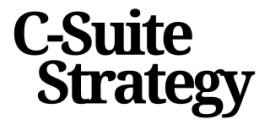
Understanding the Basics of a Great Resume
Mastering the Essentials of an Impressive Resume
Creating a resume that stands out begins with understanding the fundamental components that make it effective. This document is your personal marketing tool, and its primary objective is to land you an interview by succinctly presenting your skills, experiences, and professional background. Your resume should include your contact information, a summary of qualifications, employment history, education, and relevant skills. However, more than just listing these items, it's crucial to think about how to present them to catch the attention of both human recruiters and automated systems. When writing their resumes, many executives struggle with how to convey their role in significant projects or leadership achievements. Highlighting these experiences can be daunting, yet they are vital for demonstrating your impact within your previous roles. Using clear, action-oriented language helps to emphasize your contributions. Additionally, prioritizing content that aligns with your target job is crucial. Customizing your resume for each application by including industry-specific keywords can significantly improve your chances of making it through application filters, a strategy we will expand upon when discussing ATS systems. For executives aiming to climb the corporate ladder or transition between roles, knowing how to polish your professional image on paper is essential. Consider exploring insights on how to navigate these transitions effectively here. In the subsequent sections, we'll delve into how to best showcase your skills and experience, ensuring your resume not only represents you accurately but also positions you as the ideal candidate for your desired role.Showcasing Your Skills and Experience
Highlighting Competencies and Achievements
Crafting a resume that demands attention in the competitive corporate landscape involves more than listing previous job titles. Delve into the details of your competencies and achievements, as these are the factors that truly define your professional identity. We don’t just want recruiters to see what you've done; we want them to envision what you can do for them based on your past successes. It's essential to present your experience in a way that relates to the job you're applying for. Tailor each bullet point under your work history to reflect relevant skills and outcomes. Ask yourself how your previous roles equipped you to excel in the role you're aiming for. It's not simply about how many years you've spent in industry; it's what you've achieved during that time and how it translates to future successes. Consider your resume as a small glimpse of your full potential. This is your chance to demonstrate leadership abilities, innovative problem-solving, and your knack for navigating complex business ecosystems. When detailing your achievements, quantify your successes where possible. Hard numbers and tangible outcomes make a stronger case than vague descriptions. Did you increase sales by a considerable percentage? Did your leadership on a project result in significant process improvements or cost savings? These specifics can be pivotal. For those looking to advance to the c-suite, articulating how your skills have driven growth or transformation in past roles is crucial. It's just as vital as understanding how to climb the corporate ladder. To learn more about strategically advancing in your career, you might find insights in our article on climbing the corporate ladder. By transforming your resume into a narrative of capability and success, you not only pass the initial resume scans but also captivate the hiring team’s interest. Use your resume as a powerful tool to communicate your potential impact, proving that you are the ideal candidate for the position.Writing a Resume That Passes the ATS Test
Ensuring Your Resume Survives the ATS Screening
In today's digitally-driven hiring landscape, it's crucial to ensure that your resume not only appeals to human eyes but also successfully navigates through Applicant Tracking Systems (ATS). These systems are designed to streamline the hiring process by scanning resumes for specific keywords and formatting details. Failing to accommodate ATS requirements can lead your otherwise impressive resume to be overlooked entirely. Firstly, it’s important to understand the algorithms used by ATS. They search for specific job-related keywords and phrases, so incorporating these into your resume can significantly enhance your chances of moving past the initial screening. To identify these keywords, carefully analyze job listings and descriptions in your field, paying close attention to skills, qualifications, and technologies frequently mentioned. Secondly, the format of your resume matters. Many ATSs struggle to parse information from complex formatting, including graphics, tables, and unconventional fonts. Stick to a clean, professional design using standard fonts and simple bullet points. A straightforward layout makes it easier for the system to extract relevant data. Furthermore, always use standard section titles like "Work Experience," "Education," and "Skills," as these are typically recognized by ATSs. Including dates of employment and education in a consistent format is also key, as systems often use these to determine the timeline of your career progression. By aligning your resume composition with ATS-friendly practices, you increase your opportunity to reach the decision-makers who matter. For more insights into exploring effective business strategies for leadership, consider following advice on optimizing resumes for both technology and the executive level. Integrating these strategies can transition your resume from just another document in the stack to one that genuinely stands out.Crafting the Perfect Cover Letter
The Art of an Impressive Cover Letter
Crafting a cover letter that captures attention is an art form, similar to the resume itself. Just as your resume needs to effectively showcase your skills and accomplishments, your cover letter should complement it by providing a narrative that connects your experiences to the role you are applying for. It should paint a picture of why you are the perfect fit. Firstly, address the cover letter to a specific person, if possible, which shows that you've done your homework. This attention to detail can make a huge difference. Start your letter with a strong opening that grabs attention, much like the headline in a news article. Explain your interest in the company and the position, relating it back to specific achievements found within your resume. An impactful cover letter should also highlight key strengths and experiences that are particularly relevant to the role. Reflect on the showcase of your skills and experience you presented in your resume and expand upon a few of those elements with anecdotes or insights that weren't included in the resume. Next, tailor the content to the company’s needs and the job description. This means understanding the company's mission and values, and mirroring them in the tone and language of your cover letter. Remember, your cover letter is not about regurgitating your resume, but rather providing context and insights into your professional journey. As you wrap up, reiterate your enthusiasm for the opportunity, and make sure to express your eagerness for discussing how you can contribute to the company’s goals in more detail. A compelling cover letter coupled with a meticulously crafted resume can greatly boost your chances of getting noticed and can serve as a bellwether for your potential performance in the role. In our journey of résumé crafting, avoiding common blunders is just as important as emphasizing the strengths. Ensure your cover letter remains free of errors and maintains a professional tone throughout. Recruiters and hiring managers notice such details, and your meticulous effort can set you apart as a candidate worth pursuing.Avoiding Common Resume Mistakes
Steering Clear of Common Resume Pitfalls
Crafting a resume is a crucial step in showcasing your professional journey and capabilities, as discussed in our previous sections. However, even the best intentions can sometimes lead to missteps that may hinder your chances of landing your dream role. Here are some common resume mistakes and how to avoid them. One frequent mistake is overloading your resume with irrelevant details. While it may be tempting to include every job you've had since college, focus instead on roles that are most pertinent to the position you're applying for. Tailoring your resume to highlight relevant experiences can make a significant difference in catching the eye of hiring managers. Another pitfall is the use of jargon and buzzwords. Industry-specific terms can be valuable, but excessive jargon can confuse or alienate potential employers. It’s essential to strike a balance between showcasing your industry knowledge and maintaining clarity and accessibility. Neglecting to proofread your resume is a misstep that can have dire consequences. Typos and grammatical errors can immediately put your candidacy at a disadvantage. Share your resume with a trusted friend or colleague to catch any overlooked mistakes and ensure your resume reads as polished and professional. Finally, remember that a clean, easy-to-read format is as important as the content itself. Overly complex layouts can distract from your qualifications. Utilize clear headings, bullet points, and consistent formatting to enhance readability and ensure that your resume can be quickly scanned by both human eyes and Applicant Tracking Systems (ATS). By steering clear of these common mistakes, you'll enhance your resume's potential to open doors and showcase your qualifications effectively. Taking the time to meticulously review and polish your resume ensures you present your best self on paper, paving the way for new opportunities.Real-Life Resume Success Stories
Inspiring Journeys: Real-Life Resume Triumphs
As we delve into the world of resumes, it's crucial to learn from those who have successfully navigated the job market with standout applications. Real-life success stories not only provide inspiration but also valuable insights into what truly works when crafting a resume.
Consider the story of Emma, a marketing professional who was struggling to make her resume shine in a competitive field. By focusing on showcasing her skills and experience, she transformed her document into a compelling narrative that highlighted her unique value. Emma's resume emphasized her ability to drive results, using quantifiable achievements that caught the attention of hiring managers.
Another example is Raj, an IT specialist who initially faced challenges with applicant tracking systems (ATS). By understanding the basics of a great resume and tailoring his content to pass the ATS test, Raj was able to secure interviews with top tech firms. His strategic use of keywords and clear formatting ensured his resume made it through the initial screening process.
Then there's Lisa, who learned the importance of a well-crafted cover letter. By aligning her cover letter with her resume and personal brand, she successfully communicated her enthusiasm and fit for the roles she pursued. This holistic approach helped her stand out in a sea of applicants.
These stories demonstrate that a thoughtful approach to resume writing, informed by best practices and real-life examples, can lead to remarkable career opportunities. By avoiding common mistakes and continuously refining your approach, you too can create a resume that not only gets noticed but also opens doors to your next professional adventure.














